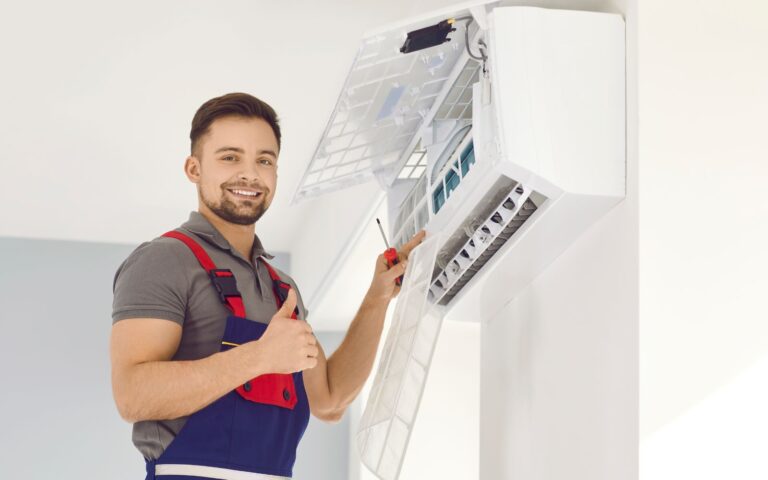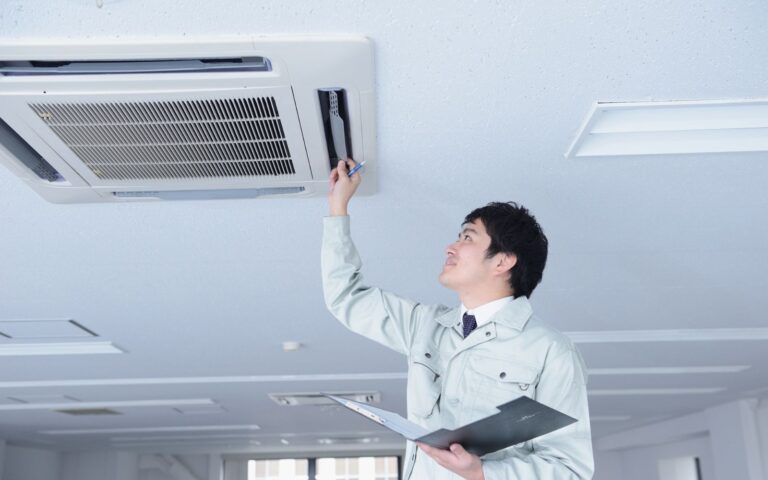Effective Sustainable Solutions for Indoor Air Quality Management

Did you know the air inside your home or office can be more polluted than outdoor air? Shocking, right? Poor indoor air quality (IAQ) can lead to serious health risks such as allergies, respiratory issues, and fatigue.
The good news is that there are sustainable solutions for indoor air quality that protect health and minimize environmental impact.
This article will explore practical steps to combat indoor air pollution, improve energy efficiency, and create good indoor air quality for better human health and well-being. Let’s get started!
Key Takeaways
- Understand the impact of poor indoor air quality on health and comfort.
- Learn practical ways to improve indoor air quality using natural and energy-efficient methods.
- Discover how to balance clean air, energy performance, and environmental sustainability.
What Causes Poor Indoor Air Quality?

Before considering solutions, consider why poor indoor air quality (IAQ) happens. Common causes include:
- Indoor air pollutants comprise volatile organic compounds (VOCs), carbon monoxide, and particulate matter.
- Insufficient ventilation strategies trap pollutants inside.
- Outdoor air pollution enters through windows or HVAC systems.
- Use of synthetic building materials and harmful chemicals in cleaning products.
- Burning wood or other fuels that release toxic gases.
Identifying these sources is the first step to improving your indoor air.
Improve Indoor Air Quality With Natural Ventilation

Natural ventilation is one of the simplest ways to improve indoor air quality. This method ensures a steady exchange of fresh air and polluted air, reducing harmful effects.
How to Use Natural Ventilation:
- Open windows and doors: Allow surrounding air to flow through your home or workplace.
- Cross-ventilation: Create airflow by opening windows on opposite sides of a room.
- Ventilation strategies: Install trickle vents to breathe fresh air without fully opening windows.
Natural ventilation improves IAQ and helps reduce energy use, lowering operating costs for commercial buildings.
Rely on Energy-Efficient HVAC Systems

Modern HVAC systems provide proper ventilation and temperature control when natural ventilation isn’t enough. The key is to choose energy-efficient solutions.
Tips for Energy-Efficient HVAC Systems:
- Install systems with heat recovery for maximum efficiency.
- Use advanced filtration systems to trap airborne particles and indoor air pollutants.
- Optimize your air conditioning systems to avoid energy waste while maintaining thermal comfort.
- Perform regular maintenance on HVAC systems to ensure good IAQ.
Efficient HVAC systems balance human health, energy performance, and building occupant comfort.
Add Air-Purifying Plants for Good IAQ

Did you know plants can naturally filter the air? Air-purifying plants are an eco-friendly way to tackle indoor air pollution.
They absorb carbon dioxide, VOCs, and other pollutants, releasing fresh air.
Best Air-Purifying Plants:
- Snake Plant: Great for improving air at night, especially in bedrooms.
- Spider Plant: Removes carbon monoxide and VOCs.
- Peace Lily: Combats mold and airborne particles.
Place these plants around your home or workspace to enjoy cleaner air while enhancing the aesthetic of your indoor spaces.
Upgrade Building Materials for Better Air Quality

The materials used in the built environment can significantly impact air quality.
Choose eco-friendly materials that release fewer toxins and boost building airtightness for better indoor air quality IAQ.
Sustainable Building Material Choices:
- Use low-VOC paints to reduce exposure to harmful chemicals.
- Opt for sustainably sourced or recycled building materials.
- Replace synthetic carpeting with natural fibers.
Such upgrades improve IAQ and align with Environmental Protection Agency standards.
Implement Mechanical Ventilation

Mechanical ventilation systems are essential for more significant buildings or spaces without sufficient ventilation.
These systems increase ventilation rates and filter out polluted air.
Examples of Mechanical Ventilation Systems:
- Advanced ventilation systems with built-in air filters.
- Smart cooling systems that regulate airflow based on IAQ levels.
- Heat recovery ventilation, which saves energy while improving airflow.
Mechanical means to ensure good air quality in commercial buildings and help building owners reduce energy waste.
Control Humidity Levels

High humidity encourages mold growth, which worsens IAQ. Controlling indoor humidity is vital for maintaining good indoor air quality.
How to Control Humidity:
- Use energy-efficient dehumidifiers.
- Ventilate kitchens and bathrooms with exhaust fans.
- Fixing leaks in the building envelope to prevent dampness.
Optimal humidity levels (30–50%) support human health and reduce mold-related health risks.
Address Outdoor Pollution

Outdoor sources of pollution, like vehicle emissions and industrial fumes, can seep into indoor spaces. Here’s how to tackle it:
- Seal gaps in windows and doors to minimize outdoor air infiltration.
- Position air intakes away from sources of outdoor pollution.
- Use air purifiers with carbon filters to reduce exposure to outdoor air quality problems.
Keeping outdoor pollution at bay ensures occupant comfort and protects public health.
Promote Green Cleaning Practices

Cleaning products often release VOCs and other toxins into the indoor air. Switch to sustainable solutions for indoor air quality by adopting green cleaning methods.
Eco-Friendly Cleaning Tips:
- Use natural cleaners like vinegar, lemon, and baking soda.
- Choose biodegradable products with minimal chemicals.
- Avoid aerosols, which add particulate matter to the air.
Green cleaning improves IAQ and minimizes the harmful effects of conventional cleaning products.
Educate and Involve Building Occupants

Finally, improving IAQ requires teamwork. Educating building occupants is key, whether at home or in commercial buildings.
What to Teach:
- Regular ventilation and increasing ventilation are essential when necessary.
- How to use air filters and ventilation systems effectively.
- Simple actions, like reducing the use of polluted air sources such as candles or aerosols.
Awareness leads to long-term habits that improve IAQ and protect human health.
Summary
Managing indoor air quality sustainably doesn’t have to be complicated.
From natural ventilation and air-purifying plants to energy-efficient HVAC systems and green cleaning practices, there are countless ways to achieve good IAQ while saving energy and reducing health hazards.
Small changes can significantly impact your well-being and the planet’s health.
Frequently Asked Questions
How Does Poor Indoor Air Quality Affect Health?
Poor IAQ can cause headaches, allergies, respiratory issues, and long-term health challenges due to exposure to airborne particles and toxins.
What Are Volatile Organic Compounds (VOCs)?
VOCs are harmful chemicals from synthetic materials, paints, and cleaning products. They contribute to indoor air pollution and should be minimized.
Can Air Purifiers Improve Indoor Air Quality?
Yes, air purifiers with HEPA and carbon filters remove indoor air pollutants, including particulate matter and gases like carbon monoxide.
Why Is Ventilation Important for Indoor Air Quality?
Ventilation removes polluted air and brings in fresh air, reducing exposure to air pollutants and improving thermal comfort.
How Can I Make My Air Conditioning System More Energy Efficient?
Regular maintenance, sealing air leaks, and using smart thermostats can optimize air conditioning systems, simultaneously improving energy efficiency and IAQ.






One Comment